New for 2025: Birdsong Academy walkshop in London. Details below.
In late September, the urgent cries of the pink-footed goose announce the season across favoured stretches of northern and eastern Britain.
Their voice is a collection of squeals and yelps, that tends to combine in a frenzied chorus, made up of hundreds or thousands of birds.
A party of pinkfeet, roving between roost and feeding ground, does not go quietly.
Many of us witness movements of geese above our heads. They’re always loud and hard to miss.
Inland in southern Britain, these are almost always made up of feral birds, that have descended from escaped or domestic stock, and have lost their habit of long-range migration.
These are typically families of Canada geese and greylags that have banded together, having spent the breeding season on a farm pond or lake not too far away.
The sound of the pinkfeet is far more likely the sign of truly migration.
These birds won’t have taken bread out of anyone’s hand at the park. Pink-footed geese have spent the summer in Iceland and Greenland. Here they’ve been busy keeping their young safe from Arctic foxes during the breeding season.
Once they have moulted their feathers at the end of summer they cross the North Atlantic for the milder estuaries and fields of Britain.
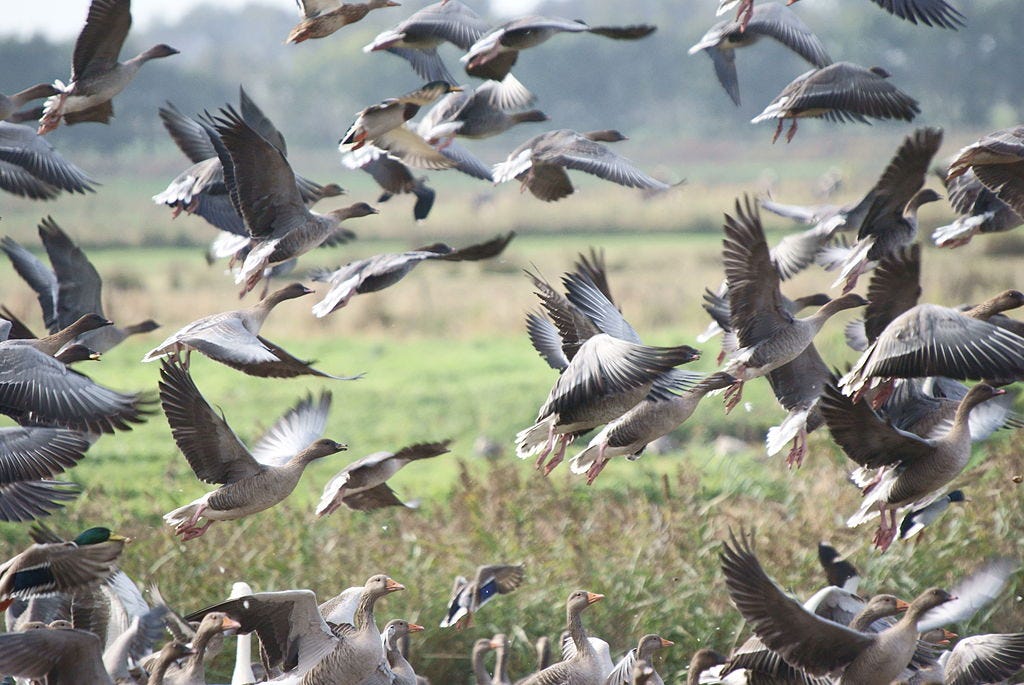
In his wonderfully atmospheric book Wintering: A Season With Geese, Stephen Rutt describes an autumn encounter with pinkfeet, made while walking through a car park in Dumfries, his new town of residence.
It takes a second or two when you’re somewhere unfamiliar for something to make sense. I know the sound - the sound of pink-footed geese. I do not know it in this context: one bare tree, hundreds of parked cars, buildings beside me and to both sides. I stand, dumbfounded for a few seconds, confused by my ears and staring at a blank sky, the only movement a steady drift of clouds. Then, as if detaching from the bare branches of the tree, a skein of geese appears behind it, low in the sky.
Around half a million pinkfeet spend the winter with us. Their numbers are concentrated along areas of the North-west, North-east Scotland, and increasingly along the East coast of England down to the Wash and Norfolk.
They have a rather neat appearance. The pink of the feet and legs also surfaces as a sliver of colour on the otherwise dark bill.
The head is dark too, but the back has a silvery sheen, while the tail and the feathers underneath it are a clean white.
Stand among thousands of birds as they depart their roost, the air full of their cries and their wings, and it’s tempting to feel you are experiencing an unbroken pattern in natural abundance. But that’s not quite the case.
Pink-footed geese were, until recent decades, rather scarce in Britain. Protection measures here and on their breeding grounds appear to have helped, and so has the increased growing of sugar beet in Norfolk, producing sweet conditions for pinkfeet.
Pinkfeet are overwhelmingly a winter bird in the UK, but a few injured or feral birds are found year-round, and in 2024 a pair bred in Lancashire.
The birds at Martin Mere WWT north of Liverpool were part of a summering group of six geese, and they raised two goslings. It’s just the third time pinkfeet have been known to breed on our islands.
This post is an update on one first published in 2022 (with full audio now available to all).
Next time: Whooper Swan
🌅 Now booking: Birdsong on Wimbledon Common - Saturday 22 March 2025
Tune into the birds in one of London’s greatest parks early next spring. We’ll listen for firecrests, woodpeckers, thrushes and other woodland birds. Limited tickets - and there’s a £10 discount for paying subscribers to Shriek of the Week (see separate email or contact me for details).
☕️ Join online: Early Bird Club - Saturday 5 October 8-9am
Early Bird Club continues for the rest of the year, on the first Saturday of the month. It’s our DIY globe-trotting Springwatch-style hour, spent checking in on live-streaming cameras and microphones across the world, and see what we can see and hear in real time.
Earlier this month we were absorbed by the surprising hidden colours on the wings of flamingoes in South Africa, and the visitors to various new birdfeeder cams across Germany and the UK.
If you’d like to join in, you can do so as a paying subscriber (which also gives you access to all the narrated posts in the archive).






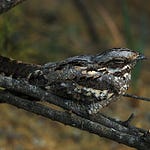
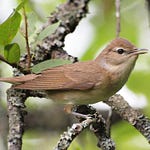

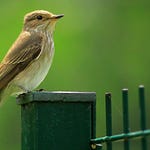


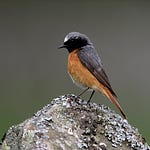
Share this post